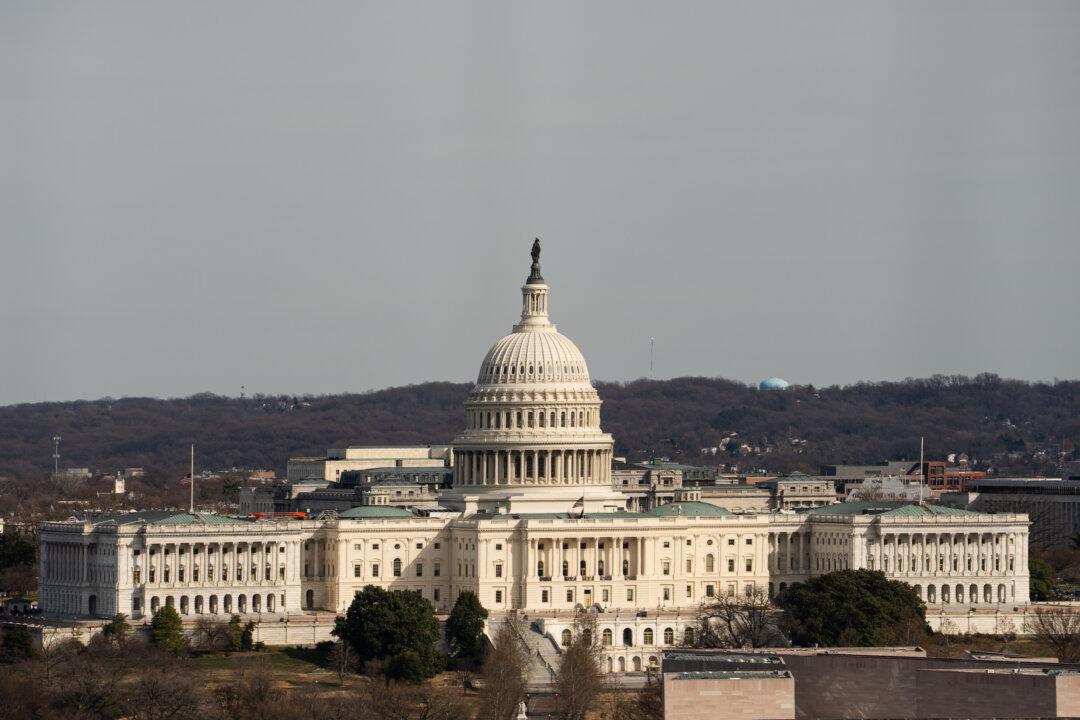The Federal Reserve appears intellectually committed to economic policy that punishes the American people. It is doing nothing to control or reduce government spending, which is the current primary driver of inflation.
The time has come to take back up the debate between demand-side and supply-side economics. In the 1970s, it was one of the historic turning points in American policy and government.
Demand-side economics focuses on crushing consumer demand and capital investment so that a slower, smaller economy will reduce pressure showing up as inflation.
Liberals love demand-side economics because it favors bigger government and a smaller private sector. There is nothing in the demand-side playbook that limits excessive government spending.
Since the explosion of spending under President Joe Biden is the major driver of inflation, it is important to look at how we got here—and why the Federal Reserve is having such a hard time bringing inflation under control.
The short story is: President Biden decided to treat the temporary COVID-19 response funding under President Donald Trump as a new baseline of bigger government. Automatically, that meant more spending, higher taxes, deeper deficits, and ballooning national debt.
Now, the federal government is pumping money into the economy faster than the Federal Reserve can squeeze it out through higher interest rates—although the Fed’s still trying.
Small businesses, people relying on credit, would-be investors, and others are all being squeezed by the Federal Reserve’s steady increase in interest rates. The Federal Reserve’s goal is to make borrowing so expensive that most American consumers and businesses will simply have to cut back on spending.
Housing is a classic example of the interest rate squeeze hurting the American people. As interest goes up, mortgages become more expensive. The price of houses must fall to compensate for the increased cost of borrowing. Many people have most of their wealth tied up in their homes. They are now poorer than they expected to be because of the Federal Reserve’s focus on cutting demand. Home builders find themselves forced to build fewer speculative houses. They have much higher interest payments on construction loans, fewer people to sell to, and lower prices for their new homes as mortgage costs rise.
When housing slows down, so does the demand for furniture, kitchen goods, plumbing, heating and air conditioning, and all the different things that complete a home.
Those slowdowns then force layoffs among construction workers, factories, and distributors. That leads to more government costs for unemployment compensation, food stamps, Medicaid, etc.
All of this leads to a bigger government with a smaller private sector (and therefore tax base). No wonder Big Government Socialists love demand-side pain.
Demand-siders believe you bring down inflation by crushing consumer demand.
Supply-siders believe you encourage investment to make new jobs, new productivity, and increased entrepreneurial inventiveness. Inflation is mopped up by more goods and services for people to buy. It absorbs the extra liquidity through extra production.
Supply-side policies are pro-consumer, pro-private sector, and pro-work ethic.
Ironically, supply-side economics even enables government to be better funded from a much bigger, more robust economy.
The key to Social Security and Medicare funding is to get back to the 3.5 percent growth rate that was the historic American average since World War II.
The anemic 1 percent to 1.5 percent growth rate demand-side economics will produce guarantees a crisis in funding government—while creating a lot bigger unemployment rate (which will need even more government funding).
A major choice in the 2024 election should be between the Biden administration’s demand-side pain and a return to the growth, prosperity, and strength that a Reaganite supply-side approach will yield.
We have proof from the Trump administration that cutting taxes and regulations inspires entrepreneurs to create more American jobs. When the American economy produces more income and higher growth, you have less inflation.
It is time to get back to the Reagan–Trump model.
The Republicans on the House Budget Committee will be the first group to have this opportunity to start a new debate about America’s future. A lot depends on it.





